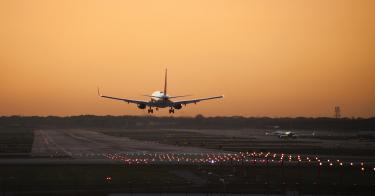It has been several months since American and Chinese officials signed a trade deal at the White House. Many have wondered whether China will actually purchase the more than $200 billion worth of American products and services this year as agreed. There has been a particular focus on commodities like corn and soybeans. Looking at monthly trade statistics and weekly agriculture sales reports, it is obvious that China will not be buying the $142 billion worth of products in the trade deal this year. Only $40 billion worth of these products have been exported to China so far.
The sales of services to China, which include travel services, financial services, and charges for the use of intellectual property, are a little harder to measure. Using the most recent data from the Commerce Department, however, it is obvious that China will not meet its services commitments nor buy $66 billion worth of services in the trade deal this year. In the first half of 2020, service exports to China were $19 billion, well behind the pace over the last four years, when service exports were above $25 billion in the first half. Each of those years ended with services exports above $53 billion.
To satisfy the trade deal, China would have to buy some $47 billion more in services by the end of the year. More than half of annual service exports to China in general come from travel services such as business trips. But since the pandemic started, world travel has tanked. While the United States received as many as 300,000 Chinese travelers each month last year, visits are now down to just a few hundred each month.
It is unlikely for such travel to return to normal anytime soon. With the coronavirus still very active and rising diplomatic tensions between Washington and Beijing, the chances of increased travel anytime soon remains low. The majority of the remaining services exports to China are made up of financial services, transport services, and charges for the use of intellectual property, such as licensing fees.
Ironically, while China is one of the worst abusers of intellectual property theft, stealing some $50 billion a year from the United States, it is also one of the leading sources for licensing and trademark revenue. American entities made over $8 billion in intellectual property charges last year, more than in Britain or Canada. Transport services exports have also been significant at $5 billion, thanks to the volume of travel and trade.
While it is unlikely that China would have purchased $200 billion worth of products and services this year, given the diplomatic tensions between Washington and Beijing, some of the blame can be placed on the fact that we are in the midst of a pandemic. The trade deal includes a provision that, in case of a natural disaster or other unforeseen event which might delay a party from timely complying with its obligations, the parties shall consult each other. This opens the door to more negotiating.
Unfortunately, American officials have given no signal that they may adjust the timeline for China’s purchase commitments. Following a recent call between American and Chinese officials, the United States Trade Representative issued a statement saying that both sides “see progress and are committed to taking the steps necessary to ensure the success of the agreement.”
Of course, the deal is more than just China purchasing an arbitrary $200 billion worth of products and services. It also includes protecting intellectual property and removing nontariff barriers to trade, which is showing mixed but positive results. But the fact is that, while the purchase commitment is not the only part of the trade deal, it is the part that is getting the most attention. It has become much more evident China will not be satisfying that part of the trade deal.
This piece originally appeared in the Hill on 9/22/20



